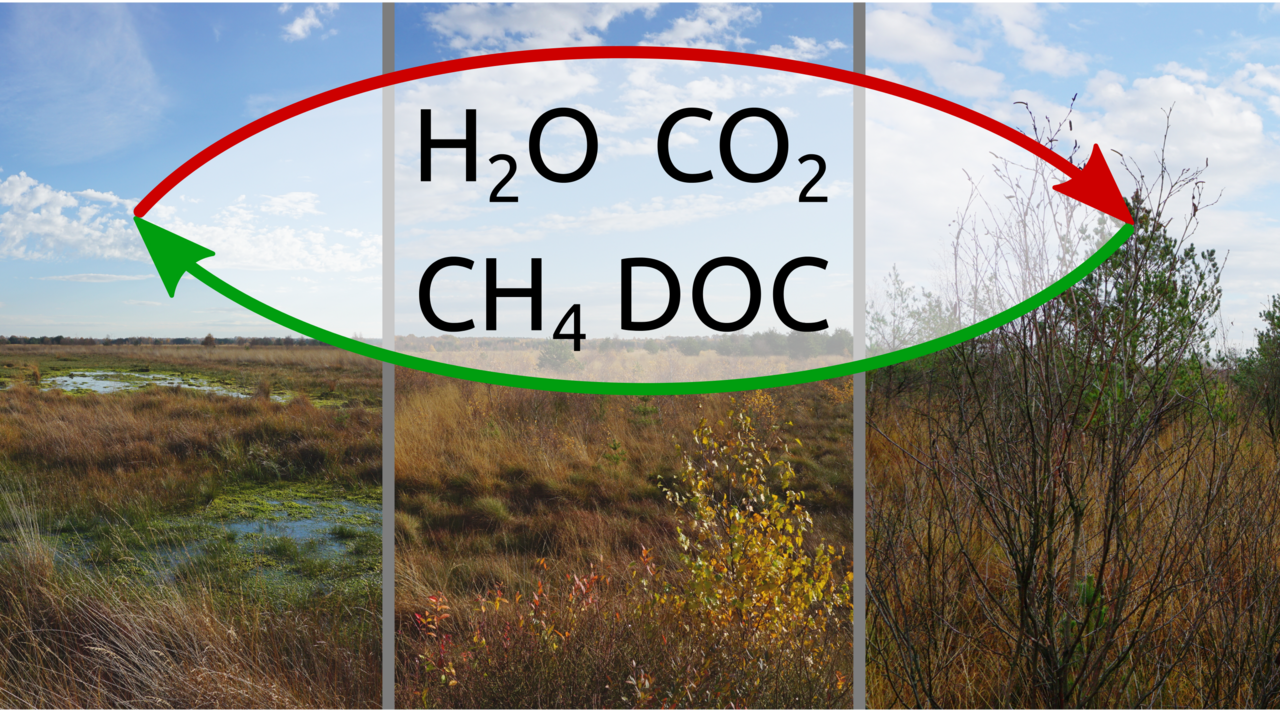Project
Impact assessment of vascular plant encroachment on water and carbon cycling in a Sphagnum dominated bog

VESBO - Impact assessment of vascular plant encroachment on water and carbon cycling in a Sphagnum dominated bog
How do changes in vegetation composition on raised bogs impact throughfall, evapotranspiration, gross primary production, respiration, net carbon balance and soil C-sink function?
Background and Objective
Boreal and temperate bogs cover less than 3% of the earth's surface, but store almost 30% of the terrestrial carbon (C), accumulated over thousands of years through permanent water saturation. Natural bogs are characterized by a vegetation cover dominated by Sphagnum mosses, but have been used by humans for centuries through peat extraction. The effects of artificial drainage on ecosystem functions and biodiversity are numerous and not limited to greatly increased CO2 emissions. The restoration of near-natural hydrological conditions and typical vegetation are the main objective of ecological restoration practiced for decades. Due to the close coupling of C fixation to the water balance, changes in the plant cover can have a significant impact on the C-sink function of the ecosystem, and vice versa.
The aim of the VESBO project is the mechanistic analysis of ET, NEE and C sink function of the soil of a restored, Atlantic-temperate raised bog under vascular plant encroachment.
The gained process understanding is highly relevant for the evaluation of restored bog ecosystems under changing climate conditions and vegetation compositions with respect to the ecosystem climate relevance. The improved knowledge about the different interactions of plant functional groups with mass and energy fluxes of the bog ecosystem is directly valued by the evaluation of restoration, nature conservation and emission reduction measures across Europe.
Approach
The focus will be set on splitting the ET and NEE fluxes of the ecosystem through Eddy Covariance and chamber measurements in situ in moss, grass and tree contributions. The results are used to parameterize a soil-plant-atmosphere exchange model, used to simulate moss and vascular plant layers on peat soils. The model is used together with the empirical data to quantify seasonal changes in the functional group flux contributions as a function of dynamic environmental conditions.
Thünen-Contact

Involved Thünen-Partners
Involved external Thünen-Partners
- Natural Resources Institute Finland (LUKE)
(Helsinki, Mikkeli, Jokioinen, Vanda, Finnland) - Ökologische Station Steinhuder Meer
(Rehburg-Loccum, Deutschland) - Leibniz-Zentrum für Agrarlandschaftsforschung (ZALF) e.V.
(Müncheberg, Deutschland)
Funding Body
-
Deutsche Forschungsgemeinschaft (DFG)
(national, öffentlich)
Duration
10.2019 - 8.2024
More Information
Project funding number: PI 1467/1-1
Project status:
ongoing

![[Translate to English:] [Translate to English:]](/media/_processed_/6/4/csm_titel_CO2Kampagne8_afeea2273e.png)
![[Translate to English:] [Translate to English:]](/media/_processed_/4/1/csm_titel_93px_CO2Kampagne8_9b0f3354d4.png)
![[Translate to English:] Logo des Bundesministerium für Ernährung und Landwirtschaft](/media/allgemein/logos/BMEL_Logo.svg)